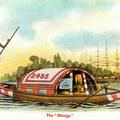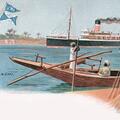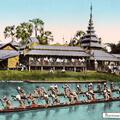Greetings from India.
A later "Greetings from" postcard printed by premiere British publisher Beagles on behalf of a Rawalpindi-based publisher who would have sold this to British troops in cantonments like Rawalpindi, in this case members of the Royal Garrison Artillery










